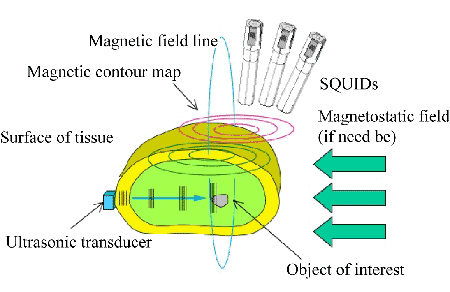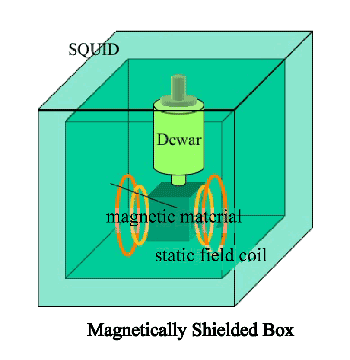Contents of Reserch
 Activated Magnetometry Utilizing SQUID Efficacy
Activated Magnetometry Utilizing SQUID Efficacy
| Project Leader |
Gen UEHARA
Professor, Applied Electronics Laboratory, Kanazawa Institute of Technology |
| U R L |
http://wwwr.kanazawa-it.ac.jp/kit_ael/ |
| Participating Research Organizations |
| |
Kanazawa Institute of Technology, Yokogawa Electric Corp. |
|
The Purpose of Projects
Conventional passive SQUID magnetometry can be developed into activated magnetometry through the employment of mechanical/acoustic or magnetic modulation. This concept benefits the area of clinical application by reducing the cost of large-scale medical systems, benefits patients by reducing their exposure to high magnetic fields, and benefits life science research by improving the throughput of noninvasive animal experiments.
Content of research and development
Noninvasiveness is the merit of magnetoencephalograph (MEG) and magnetocardiograph (MCG), which encourages its usage at clinical and research sites. The target of the project is to enhance the technology of these systems through the employment of mechanical/acoustic or magnetic modulation, allowing us to collect functional and morphological information simultaneously, which has not been achieved by the conventional passive system. Examples of the themes of research and development are magnetic activation by resonating protons and mechanical/acoustic activation by spatially/temporally oscillating the magnetic material. This concept benefits the area of clinical application by reducing the cost of large-scale medical systems, benefits patients by reducing their exposure to high magnetic fields, and benefits life science research by improving the throughput of noninvasive animal experiments. SQUID-MRI, which is one method of magnetic activation, detects the resonance of protons producing low magnetic fields (the level of the earth’s magnetic field) at frequencies on the order of 10 kHz or lower, which only SQUID can detect with a sufficient SN ratio. Sonomagnetometry, which is one method of mechanical/acoustic activation, is an evolved ultrasonograph using SQUID magnetometry. The morphological information of the acoustic echo obtained from the impedance variation in a subject is combined with the functional information of magnetic source temporal/spatial distribution in the subject.
View to making to business
SQUID-MRI realizes dual function in a single system: MEG and MRI. For clinical sites, it will present economical benefit through system cost reduction and footage reduction at urban sites. It will also benefit patients because the level of their exposure to the magnetic field is low. Sonomagnetometry not only realizes dual function in a single system, MEG/MCG and ultrasonograph, but it also realizes drug delivery system visualization of magnetically targeted medicines. This technology is useful in animal experiments because of its high throughput, thus promoting efficiency in advanced medical research, such as new medicine development, and in life science, where calls for system commercialization are expected to increase.



